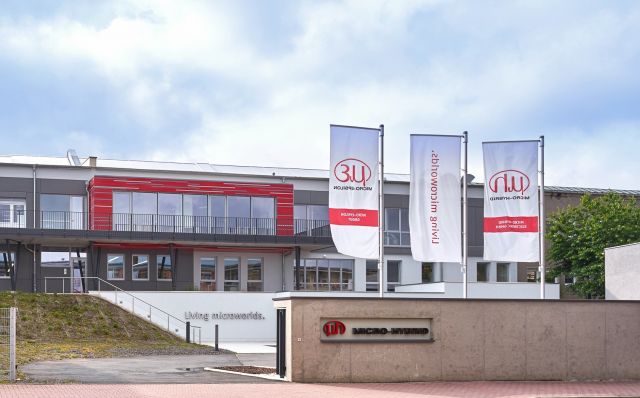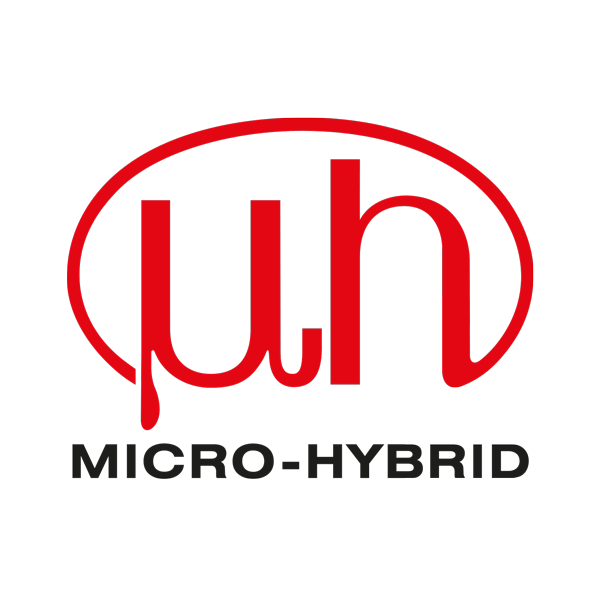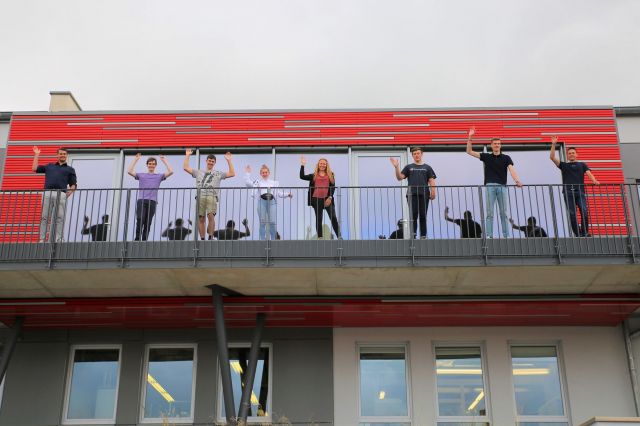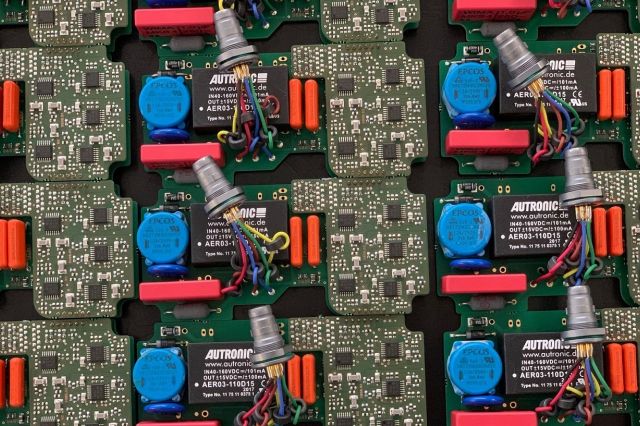
What Is Thick-Film Technology?
Micro-Hybrid develops and manufactures customized hybrid circuits using advanced thick-film technology. This enables the creation of highly reliable, miniaturized electronic modules on ceramic, aluminum, or glass substrates. By combining in-house design expertise with state-of-the-art production processes, Micro-Hybrid delivers durable, precise, and application-specific solutions for demanding industries, such as medical and aerospace. Our expertise covers the entire value chain - from concept and layout to substrate production, circuit manufacturing, and module packaging.
What Is Possible with Ceramic Hybrid Electronics?
Thick-film hybrid technology enables compact, high-performance electronic designs. Complex multilayer circuits can be realized on ceramic, aluminum oxide, aluminum nitride, or glass substrates. Conductive paths, resistors, and contact systems are printed directly using screen-printing processes, creating dense electronic architectures in limited space.
LTCC substrates allow even deeper integration, embedding passive components such as resistors, capacitors, and coils directly into the substrate. This reduces system size while improving stability and reliability.
Precision Through Laser Trimming to Adjust Resistors
During laser trimming, the resistance of circuits or integrated circuits is precisely adjusted - either to a specific resistance value (passive adjustment) or to the functional requirements of the circuit (active adjustment). This process compensates for technological tolerances, ensuring resistors achieve ideal resistance values with excellent performance and dielectric strength. Throughout trimming, the output signal is continuously measured and compared to the setpoint, and the laser cut stops automatically once the target value is reached. Additional protective layers, glazes, and passivation coatings further enhance durability, allowing these circuits to operate reliably even in harsh environments.
Where Are Ceramic Hybrid Electronics Used?
Hybrid circuit technology becomes essential when standard printed circuit boards reach their limits - for example, in high-reliability systems exposed to extreme temperatures, mechanical stress, or high voltages. Typical applications include:
- Aerospace and Aviation - Ceramic hybrid electronics are a core technology in aerospace systems, powering avionics, RF modules, and advanced sensor networks. These components must operate reliably despite extreme temperature changes and intense vibrations. Ceramics' unique properties—including thermal stability, radiation tolerance, low mass, and mechanical strength—make them perfect for critical applications like satellite electronics and next-generation spaceflight instruments.
- Automotive - The automotive industry uses ceramic hybrid electronics extensively in systems like power inverters, engine controllers, and various sensors (pressure, temperature, and combustion). Their mechanical robustness, high thermal conductivity, and resistance to harsh environmental conditions ensure reliable, long-lasting performance in the engine and chassis. These qualities enable the development of smaller, high-performance modules crucial for modern vehicle safety and propulsion systems.
- Medical and Biotechnology - Ceramic hybrid circuits are fundamental to modern medical technology, used in devices like implantable and external sensors, imaging hardware, and power delivery subsystems. Ceramics are the material of choice due to their biocompatibility, chemical inertness, and high dielectric strength. These properties ensure long-term stability and patient safety, meeting strict regulatory standards for both miniaturized implantables and high-reliability diagnostic tools.
Whenever maximum durability, precision, and stability are required, hybrid circuits are the preferred solution.
Micro-Hybrid’s Technological Expertise
Our production capabilities are built on decades of experience and continuous investment in advanced manufacturing technologies. Core competencies include:
- Substrate Technology - Selection and processing of tailored substrate materials
- Circuit Manufacturing - Screen-printing of conductive, resistive, and dielectric pastes in multiple layers, followed by drying and sintering
- Thick-Film Printing - Successive application and firing of conductor tracks, resistors, and dielectric layers for complex circuit structures
- Automated Optical Inspection (AOI) - High-precision quality control of printed structures
- Dividing - Mechanical or laser separation of substrates into individual modules with maximum precision
- Laser Trimming - Active and passive trimming for precise resistance values and functional parameters
- Final Module Processing - Assembly methods such as SMD mounting, Chip-on-Board (COB), and hybrid packaging for complete, ready-to-use electronic modules
By combining these technologies, Micro-Hybrid delivers hybrid circuits and modules that consistently meet or exceed customer expectations. Our flexible 360° service supports small, medium, and large production volumes - ensuring every step, from concept to finished module, is optimized for performance and reliability. Micro-Hybrid isn’t a conventional supplier - it’s a long-term technology partner. Contact us today and let us help you enter new spaces.


Global presence. Local expertise.
With our international Sales and Application Centers, we are close to our customers - wherever they are.
From first contact to technical consultation and after-sales support, our local teams ensure fast response times, in-depth application know-how, and the best service throughout the entire sales process.
Micro-Hybrid Electronic GmbH
Heinrich-Hertz-Str. 8
07629 Hermsdorf | Germany
T +49 36601 592-0
contact@microhybrid.com
Micro-Hybrid Electronic, Inc.
Tech Park Arizona
9030 S. Rita Road,
Suite 122, Tucson, AZ 85747
Qingdao Micro-Hybrid
Electronic Technology CO., Ltd.
92 Chunyang Road, Building 29
Room 1505, Chengyang District


